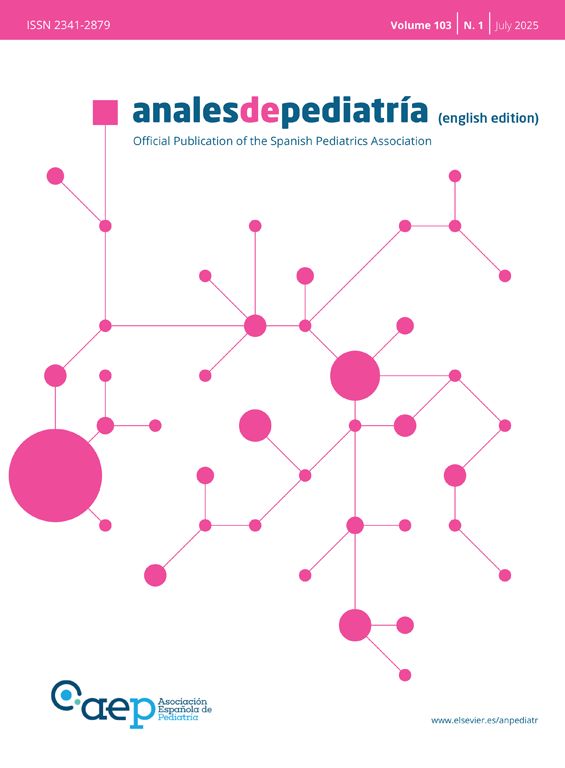A boy aged 13 years was brought to the emergency department due to the presence of an inguinal mass detected 24h before. The swelling was tender and, although it was not inflamed, could not be reduced, and the findings of the ultrasound scan were suggestive of incarcerated inguinal hernia, prompting referral to our hospital. The physical examination revealed a partially reducible mass below the inguinal ligament compatible with femoral hernia (Fig. 1). Surgery corroborated the diagnosis of femoral hernia, which was repaired without complications (Figs. 2 and 3). Femoral or crural hernia is a very rare condition that accounts for 0.3%–2% of pediatric hernias and poses a diagnostic challenge, due to which it has earned a reputation as a “puzzling pathology”.1 It is characterized by the protrusion of abdominal contents through an enlarged femoral ring probably resulting from the narrow posterior inguinal wall attachment onto the pectineal ligament.2 Between 35% and 75% of cases are misdiagnosed as inguinal hernia, which results in delayed treatment, inappropriate surgical intervention and an increased incidence of complications and recurrence (5 %–13 %).3 These errors could be avoided with the performance of a thorough physical examination and maintenance of a high level of suspicion for femoral hernia in the presence of a mass inferior to the inguinal ligament and lateral to the pubic tubercle, which would allow adequate surgical planning and avoid intraoperative surprises, complications and recurrence.
(A) Mass measuring approximately 4×3cm (arrow) inferior to the inguinal ligament boundary of the right groin—represented by the sashed line—and lateral to the pubic tubercle (represented by the medial end of the red line). (B) Frontal view of the protrusion, inferior and lateral to the inguinal canal, which was tender, partially reducible and free of sings of inflammation, compatible with femoral or crural hernia (arrow).
Findings of the scheduled surgery performed 10 days after the initial assessment in the emergency department. (A) Incision in the right groin with visualization of the hernial sac containing intraperitoneal fat (arrow), protruding from the floor of the inguinal canal through the femoral ring, bordered laterally by the femoral vein, medially by the lacunar (Gimbernat’s) ligament, anteriorly by the inguinal ligament and posteriorly by the pectineal (Cooper’s) ligament. (B) Dissection of the sac and isolation of the neck of the hernia, exposing the defect in the femoral ring (arrow).
Illustration of the surgical repair. After reducing the contents of the hernia into the abdominal cavity, primary repair was performed with polyglactin 910 (2-0), suturing the pectineal (*) and inguinal (arrow) ligaments to close the defect, without opening the fascia of the external oblique muscle or addition of prosthetic material. Five months after the intervention, the patient remained asymptomatic. Source: image produced by the corresponding author.









